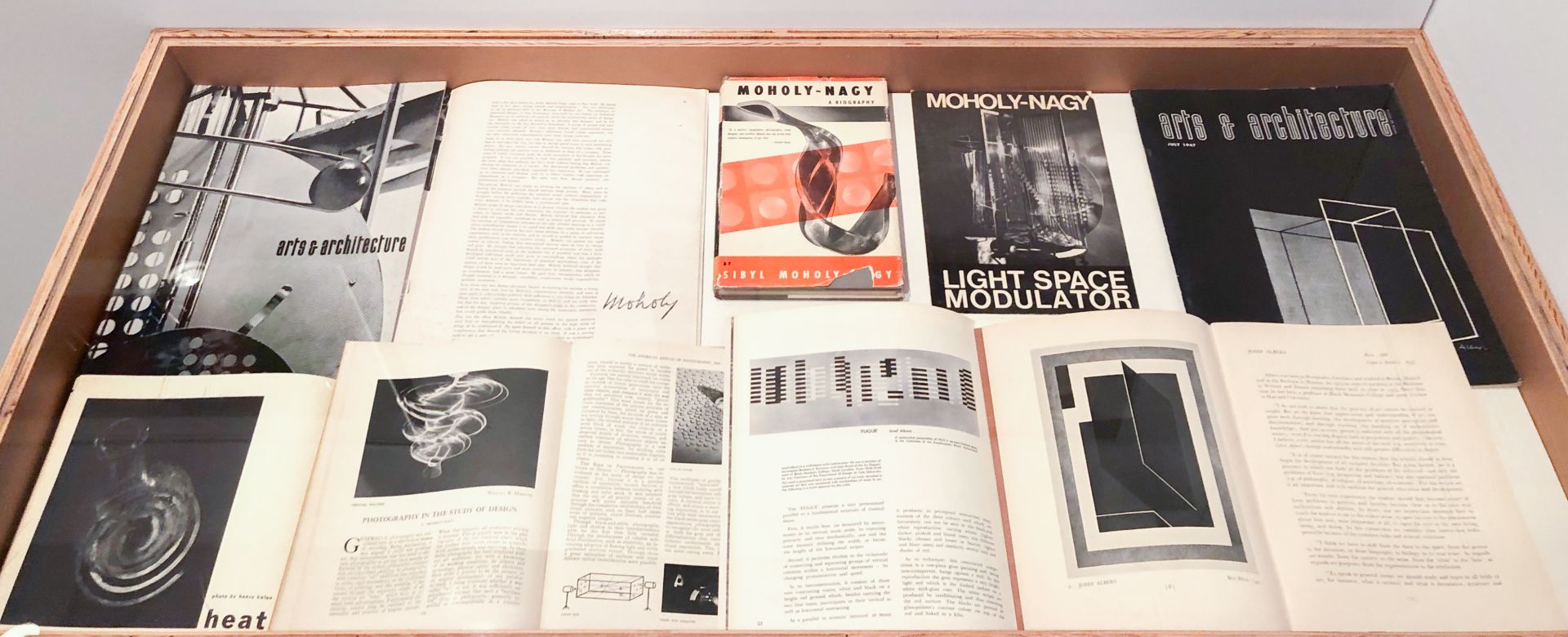Colour/Light/Movement/Art
Josef Albers’ and László Moholy-Nagy’s Legacy
Josef Albers had a discernable, if largely indirect effect on Canadian art, particularly colour-field painting. László Moholy-Nagy’s Light Prop for an Electric Stage (1930), reproduced in his influential 1947 book Vision in Motion, originally intended as a prop for making light displays and films rather than as a work of art, was reinterpreted during the 1950s—the “golden age” of kinetic light art—as a pioneer work of kinetic light art, and was, at some point during the 1960s, redubbed the “Light Space Modulator.” Moholy-Nagy’s sometime studio assistant and a teacher at the New Bauhaus and School of Design in Chicago, György Kepes, became one of the principal proponents of kinetic light art while at MIT, where he founded the Institute for Advanced Visual Study. Michael Snow, Ron Kostyniuk and Claude Toussignant were among the Canadian artists inspired by them and by the European and Latin American kinetic artists of the 1950s and ‘60s, gathered around Denise René’s Paris gallery, to produce works of art in New Media during the 1960s and into the ‘70s.
Top register, left to right: Arts and Architecture (June 1965), with a close-up view of László Moholy-Nagy’s Light Prop for an Electric Stage (here identified as the “Light Machine”) on the cover; Arts and Architecture (March 1947) open to show Edgar Kaufman Jr.’s tribute to Moholy-Nagy after his death early in 1947; Sibyl Moholy-Nagy, Moholy-Nagy: Experiment in Totality, New York: Harper & Bros., 1950. Design: Martin Metal. This copy is dedicated by the author to Alfred Barr Jr., Director of the Museum of Modern Art, New York. This hagiographic biography of her late husband became a best-seller in avant-garde artistic circles, and did much to maintain Moholy-Nagy’s reputation after his death in 1947; Nan Piene, Moholy-Nagy: Light Space Modulator, New York: The Howard Wise Gallery, 1970; Arts and Architecture (July 1947), showing Construction on Black by Josef Albers. Lower register, left to right: Creative Campus (Spring 1952) (University of Manitoba), open to show Henry Kalen’s photograph Heat. This early experimental photograph seems to reflect a knowledge on Kalen’s part of Moholy-Nagy’s, Kepes’, and their students’ photographic experiments; László Moholy-Nagy, “Photography in the Study of Design” in: The American Annual of Photography 1945; The Structurist (1964), open to show Josef Albers’ 1925 work Fugue; European Artists Teaching in America, Andover MA: Addison Gallery of American Art, 1941, open to show pages on Josef Albers. (Unless otherwise indicated, items are from a private collection)
